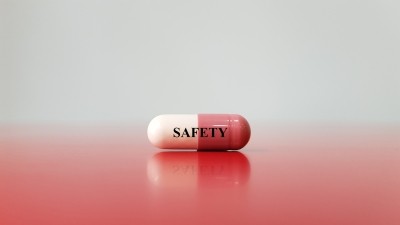Navigating regulatory challenges in signal management for pharmacovigilance

The conversation delves into the complexities of signal management in the PV landscape, highlighting recent advancements and the challenges faced under stringent regulatory requirements. Dr Buddha shares his expertise on how evolving technologies and methodologies are enhancing the detection, evaluation, and management of drug safety signals, ensuring patient safety and regulatory compliance.
LL: The life sciences industry is well versed with signal management (SM) as a regulatory requirement. What has changed now that the industry urgently needs to review its SM capabilities?
NS: The life sciences industry is well-versed in SM as a regulatory requirement. However, the recent influx of data and the increasing necessity for proactive safety measures are compelling the industry to seek more effective and efficient SM solutions. SM is the central pillar of a forward-looking Pharmacovigilance (PV) infrastructure, ensuring patient safety by continuously monitoring potential risks within the vast amount of PV data. The typical SM process follows a methodological approach that includes:
This process is governed by regulations, adheres to specific time constraints, and generally involves analysing both internal and external pharmacovigilance databases, clinical & non-clinical data, patient exposure, and scientific literature.
The evolving landscape of technological advancements and heightened regulatory scrutiny has introduced new challenges and opportunities for SM. These changes make it imperative to understand the current challenges and future trajectories of SM. Consequently, investing in advanced SM capabilities has become not just a regulatory obligation but a strategic imperative for maintaining patient-centricity and ensuring the highest standards of safety in the life sciences industry.Top of Form
LL: What challenges lie ahead? What are the current SM hurdles?
SKB: Efficient SM is paramount in navigating the complexities of pharmacovigilance. However, many challenges persist, hindering timely detection and appropriate response to safety signals. Below are key challenges in signal management and their operational impacts:
These challenges may vary for different organizations depending on how many products they have, the dataset/number of cases, and how varied their products are. However, there's no one-size-fits-all solution. While big companies might have the resources for high-tech fixes, smaller ones often face budget constraints. Hence, the imperative lies in crafting tailored solutions that adeptly address the unique demands of each segment, fostering scalability, efficiency, and regulatory compliance.
LL: How can the industry navigate these challenges?
SKB: Addressing these challenges requires a multifaceted approach, integrating advanced technologies, proactive strategies, and planning to ensure robust and reliable SM practices. It is not necessary to use advanced Artificial Intelligence for all the problems. There are areas where a simple robotic process automation (RPA), connecting with other databases, and process changes can make the process more efficient.
To tackle the issue of duplicate cases, rule-based engines can effectively deduplicate cases, reducing false positives and optimizing signal detection efficiency.
Enhancing data completeness through standardized reporting practices and automated data completeness scoring mechanisms can mitigate the impact of incomplete case data.
To mitigate signal leakage biases, employing more advanced NLP techniques, such as Logistic Regression models, can help mitigate signal leakage biases, ensuring more accurate signal detection and analysis.
Proactively addressing the masking or cloaking of signals due to database limitations involves diversifying databases and conducting subset analyses with a multimodal approach.
Transitioning from a reactive to a proactive approach involves leveraging real-world data and advanced analytics to enable early signal detection and proactive risk mitigation measures. By refining data mining algorithms and thresholds and implementing stratification and subsetting techniques, signal noise can be minimized, enabling pharmacovigilance professionals to focus on pertinent safety signals. Real-world data (RWD) utilization is widespread, underscoring its role in augmenting signal detection processes. These RWD studies can provide additional robust evidence. However, such studies are often resource and time-intensive, meaning that they are seldom feasible given signal assessment timelines. To help address the resource and time constraints of traditional safety assessment, Transcelerate’s initiative for rapid signal assessment using RWD aims to evaluate current practices and identify novel opportunities to complement signal assessment with rapid RWD analyses. Health authorities, exemplified by initiatives such as The European Medicines Agency (EMA) and the European Medicines Regulatory Network's DARWIN EU®, and the FDA's Sentinel Initiative, are demonstrating a profound interest in integrating Real-World Evidence with SM.
Outsourcing emerges as a strategic lever for organizations seeking to bolster their signal management capabilities. A notable percentage of organizations currently outsource a significant portion of their signal and risk management operations, with a growing trend expected in the coming years. The emphasis lies on enhancing vendor flexibility, alignment with long-term vision, and fostering innovation through strategic partnerships.
LL: What is the sentiment amongst PV leaders on these revolutionary technology led changes in conventional strategy?
SKB: In my recent conversations with multiple PV leaders, the need to explore innovative approaches toward SM stands out. Much of the discussion revolved around the utilization of knowledge graphs and the use of GenAI for predictive signal detection, as well as leveraging biochemical databases and various regression models to mitigate masking effects in disproportionality analysis.
NS: On the other hand, findings from our recent PV Industry Survey Report sheds light on the industry's reliance on evidence-based evaluation frameworks (Fig 2) and the gradual integration of automation and AI. While the current level of automation stands at 40% for most organizations, there’s a palpable anticipation for increased automation levels soon (Fig 3). However, challenges include barriers to technology adoption, such as lack of investment and integration challenges. Moreover, in-house skill deficits pose a significant hurdle in harnessing the full potential of emerging technologies.
LL: What's next? How do you foresee the Future of SM?
NS: SM stands at a pivotal juncture, poised for transformation amidst technological advancements and evolving regulatory landscapes. The convergence of AI, automation, and real-world data holds immense promise for revolutionizing signal detection and management processes. However, realizing this potential necessitates a concerted effort to overcome existing challenges and embrace innovation. By navigating the currents of change with foresight and adaptability, the life sciences industry can ensure the continued patient safety.















